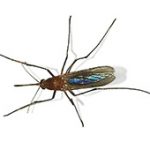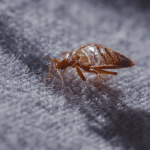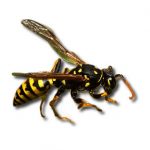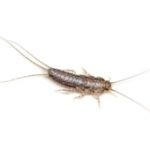How to Get Rid of Mosquitoes Naturally
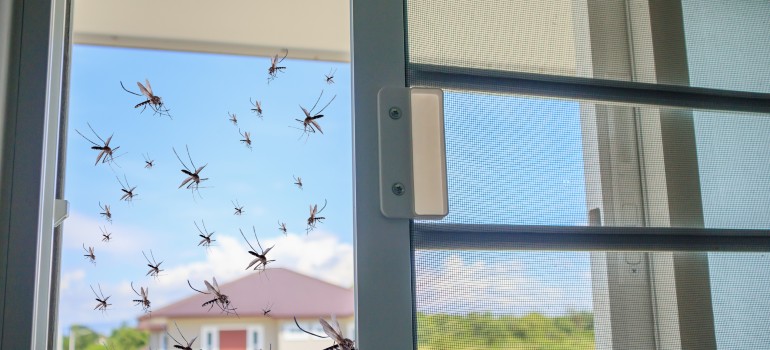
To keep their gardens and homes mosquito-free, many people choose natural mosquito repellent solutions. To get rid of mosquitoes, focus on eliminating insect breeding grounds by removing standing water. You can also use natural repellents like citronella or peppermint oil, and employing mosquito traps or fans.
We explore eco-friendly mosquito pest control methods, so instead of using synthetic chemical sprays, opt for natural insect repellents to deter mosquitoes.
How to Eliminate Mosquitoes in the House
Combining multiple natural methods offers the best protection against mosquitoes bites. Here are the most effective strategies:
- Use mosquito traps – DIY yeast and sugar mosquito traps attract and capture mosquitoes. Commercial mosquito zappers are highly effective in reducing populations.
- Install mosquito screens and netting – Use fine-mesh screens on doors and windows to prevent mosquito entry. You can also sleep under mosquito nets, especially in high-risk areas. Fix gaps in screens and doors if any.
- Create environment mosquitoes hate – Use outdoor fans, as mosquitoes struggle to fly in strong air currents. Burn citronella candles or mosquito-repelling incense in outdoor areas. Some essential oils are known to repel mosquitoes, but they may not be as effective as traditional pesticides. The best option for you is to use essential oils that are made from lavender, lemon, or eucalyptus. Lemongrass, peppermint, clove, and tea tree oil are options, as well.
- Apply natural insect repellents regularly – Use essential oil sprays or DIY mosquito lotions. Wear mosquito-repellent clothing, such as those treated with permethrin.
- Homemade mosquito repellent spray – Simple prep work is required. Pour a few drops of your chosen essential oil into a spray bottle with water, shake it, and voilà! You have an anti-mosquito spray! It can be applied directly on your skin and around your house, but be careful with fabrics – you can stain them.
- Seek professional mosquito pest control services – If mosquito infestations persist, consider eco-friendly mosquito control treatments, such as fogging services using non-toxic repellents or biological larvicides.
DIY Mosquito Control Solutions for Gardens and Patios
Mosquitoes can turn a peaceful garden or patio into an unbearable space, especially during the warmer months. Mosquitoes lay their eggs in stagnant water, and even a small amount can support mosquito larvae. To prevent mosquito infestations in your yard:
- Remove standing water from birdbaths, plant saucers, clogged gutters, and unused containers.
- Change water in fountains and ponds regularly or install a small water pump to keep it moving.
- Use natural larvicides like BTI (Bacillus thuringiensis israelensis) to kill mosquito larvae in ponds.
- Introduce mosquito-eating fish like goldfish or guppies to garden water features.
- Keep your yard tidy – Anything that holds water can serve as a breeding ground for mosquitoes, whether natural or artificial. Small rainwater pools and irrigation that falls on leaves, palm fronds, and other yard debris, create the perfect conditions for mosquitoes to lay eggs. Needless to say, you can prevent this by keeping the yard tidy. Additionally, don’t leave pet bowls, furniture, candle holders, or other items where water can collect. Also, make sure to keep the gutters clean and well-maintained.
- Vinegar and lemon spray – Mosquitoes hate the strong smell of vinegar and citrus. Mix 1 cup of apple cider vinegar, juice of 1 lemon and 1 teaspoon of dish soap. Mix the ingredients in a spray bottle and Apply around seating areas and garden furniture. This spray also deters other insects, such as ants and flies.
- Install outdoor mosquito traps – By mimicking a person or animal, mosquito traps are designed to attract female mosquitoes. They combine several cues that mosquitoes usually use to detect people, such as light, colour, temperature, chemical odour, and carbon dioxide. Mosquito traps are available in a wide variety. The traps’ effectiveness will be determined by how often they are maintained, what kind of attractant they use, and where they are placed. When choosing one, the size of the area you want the mosquito trap to cover should always be considered. Outdoor traps, for example, typically attract the blood-feeding insects with ultraviolet light and carbon dioxide. Generally, they also have a larger capacity than indoor traps.
- Mow your lawn regularly – Mosquitoes hate full sun; it can cause them dehydration problems, so they prefer tall grass and shrubs, where they can hide. Cut your lawn to the recommended height for the type of grass you have, and trim bushes around seating areas so the insects won’t have a place to lay in wait for you.
- Grow mosquito-deterrent plants – Mosquito repellents don’t have to be just functional – they can be beautiful, too. Adding natural deterrents to your garden can help keep the insects at bay while enhancing your landscape. For mosquito pest control, you can grow the following plants: marigold, lavender, rosemary, basil, peppermint, sage, or citronella.
Mosquito control doesn’t have to rely on harmful chemicals. With natural repellents, DIY mosquito traps, and strategic planting, you can effectively deter mosquitoes while keeping your outdoor spaces safe and eco-friendly.
What Is the Most Effective DIY Mosquito Control Method?
The best DIY mosquito control strategy combines multiple approaches, including:
- Eliminating breeding sites by removing stagnant water.
- Using natural mosquito-repellent plants in gardens and patios.
- Applying homemade mosquito sprays around outdoor seating areas.
- Setting up physical barriers like mosquito netting and outdoor fans.
- Using mosquito traps to reduce the local mosquito population.
By implementing these DIY solutions, you can enjoy a mosquito-free home and garden all season long.
Our goal is only to provide you with valuable information about mosquitoes and possible ways to get rid of them. As a commercial service provider, we cannot give you medical advice.




